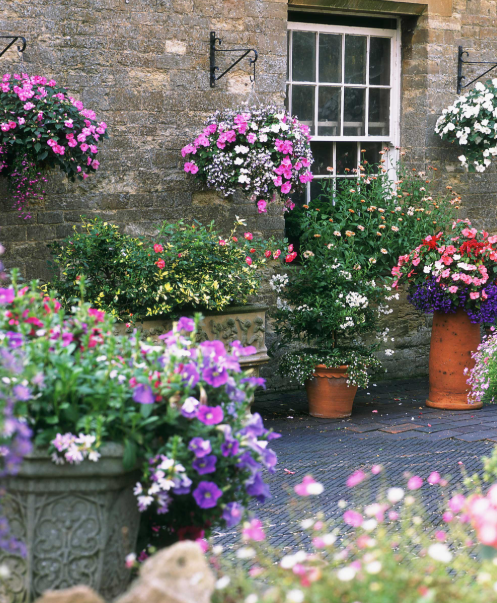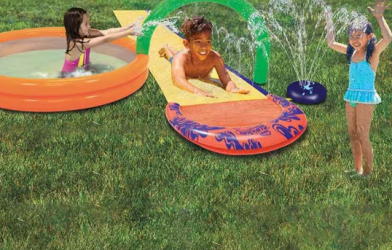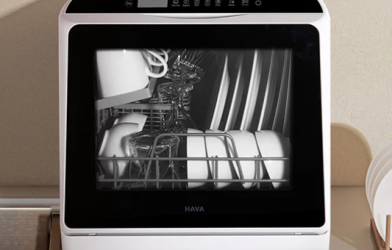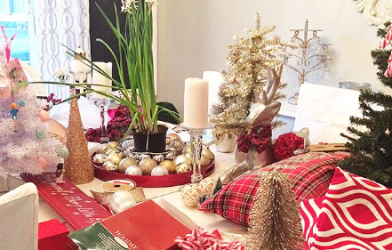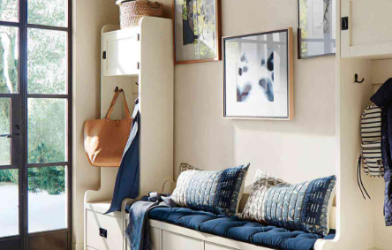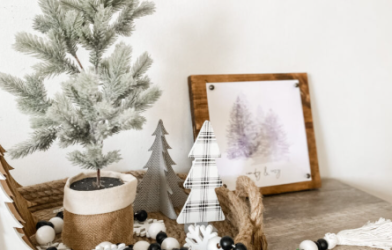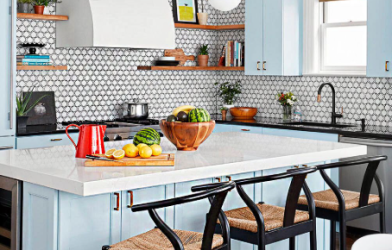Subtotal $0.00
Containers are a versatile and popular addition to any garden, whether large or small. They’re used to bring color, solve design issues, and even address challenges like difficult planting conditions. If you’re looking to add some personality or functionality to your outdoor space, here are some innovative ways to incorporate containers into your garden.
1. Containers as Practical Solutions
One of the most effective uses for containers in the garden is to hide unsightly elements. For example, I once used a tall rectangular container in front of an electrical panel to mask its unattractive presence. By planting a tall evergreen in the back and colorful heucheras in the front, I was able to both cover the eyesore and create an attractive focal point. This is a perfect example of how containers can serve as a stylish solution to problems in the garden.
Another great example comes from a homeowner who used several narrow containers of varying heights to disguise a water meter attached to their house. Not only does this arrangement add interest to the space, but it also prevents people from accidentally bumping into the meter.
2. Creating Barriers with Containers
Containers can be used to create visual barriers in the garden, giving you more privacy or guiding the eye in a specific direction. For instance, Linda Allard, the designer behind Ellen Tracy clothing, placed oversized terra cotta containers filled with lemon trees to separate a patio from the neighboring lawn. This simple addition not only added a touch of greenery but also helped define the space.
Similarly, in Lani Freymiller’s garden, containers filled with evergreen shrubs were placed on either side of a narrow gate, creating a seamless transition and encouraging visitors to explore further.
3. Planting in Tough Conditions
Planting under large trees with dense root systems can be tricky, but containers provide a great workaround. On a recent garden tour, I noticed a homeowner who had placed containers with Japanese maples under their towering redwoods. The containers were hooked up to irrigation, which helped the trees thrive in this challenging spot. This is a great example of how containers can be used to plant in areas where the ground is not conducive to traditional planting.
4. Filling Seasonal Gaps
Containers are ideal for filling in gaps in your garden during off-seasons. I use resin containers in my garden to add height and color during the winter and early spring when some plants are dormant. The beauty of resin is that it’s lightweight and easy to move around as needed. For example, I have a container filled with salvia and dahlias that adds vibrancy while I wait for my late-summer perennials to bloom. You can also use containers for colorful bulbs during the winter months, bringing life to areas that are otherwise bare.
5. Adding Drama to Small Spaces
In small or narrow garden beds, adding containers can bring a dramatic effect. For a tough, hot area under my carport, I planted a container with an Australian Wooly Bush (Adenanthos sericeus) that thrives in the intense heat with minimal water. The lipstick-red blooms of Crocosmia ‘Lucifer’ also add a pop of color, attracting hummingbirds and creating a lively display. Containers can help inject interest and height into tight spaces where traditional planting might be challenging.
6. Portable Patio Gardens
Containers are also fantastic for creating portable gardens, especially on patios with limited space. For example, my mother used a collection of containers to transform her small patio into a lush garden retreat. Containers not only added privacy but also allowed her to enjoy more of her favorite plants. You can also use rectangular containers to save space and add varying heights to your garden, softening walls and creating interest in otherwise dull areas.
7. One-Pot Wonders
If you’re looking for low-maintenance options, consider using containers planted with a single plant. I love the simplicity of “One and Done” containers, where I fill a pot with just one plant, like an evergreen shrub, grass, or succulent. These require little upkeep and still add beauty to the space year-round. For example, a giant foxtail fern in an oversized container can create a striking focal point without the need for constant maintenance.
8. Integrating Containers into Garden Beds
While containers are often placed on patios or decks, they can also be incorporated directly into garden beds. Elevating containers within the bed adds height and draws attention to specific plants. It’s an easy way to create dimension and interest. I’ve placed an oversized pot with a weeping Cercis ‘Ruby Falls’ in my garden, where it stands out and adds color through the seasons. Elevating the container ensures proper drainage and prevents the plants from being overshadowed by surrounding growth.
9. Adding Focal Points with Unique Containers
Sometimes a striking container, even without plants, can be a focal point in your garden. Large, unusual containers can add character and visual appeal to your outdoor space, especially in winter when other elements may be bare. I have a beautiful urn that adds a burst of color to my garden during the fall months and continues to be an eye-catching piece throughout the year.
10. Showcasing Personality in Your Containers
One of my favorite things to do in the garden is infuse some humor and personality into the space. For example, I’ve planted succulents in old shells and paired them with a cracked antique crock and a quirky head that used to sit on my fireplace mantle. Adding personal touches like this gives your garden character and makes it feel uniquely yours. Repurposing items, like using an old chair as a planter or turning a propane tank head into a planter, is a fun way to showcase creativity in your garden.
Conclusion
Containers are an excellent way to solve gardening challenges, add interest, and show off your unique style. Whether you’re working with a small garden or a larger space, containers offer endless possibilities. From filling gaps in the garden to creating dramatic focal points, containers can transform your outdoor space into a vibrant, personalized oasis.




